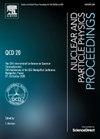Muon spin rotation/relaxation/resonance (μSR) spectroscopy uses highly polarized muons to study the microscopic magnetic structure and dynamics of condensed matter. In addition to the five existing muon facilities, the first Chinese muon source, the Muon station for sciEnce technoLOgy and inDustrY (MELODY), is planned to be constructed in Phase II of the China Spallation Neutron Source (CSNS). It aims to provide intense and pulsed muon beams to conduct μSR applications in multiple disciplines. The group from the University of Science and Technology of China (USTC) participated in the collaboration with the CSNS accelerator group for the construction of the muon source. The USTC group led the research and development (R&D) of the first-generation photomultiplier tube (PMT)-based μSR spectrometer, and the design of the second-generation silicon photomultiplier (SiPM)-based spectrometer. The PMT-based spectrometer is a 128-channel prototype to demonstrate and develop key detector and electronics technologies for the planned MELODY. After several iterative designs and updates of detectors and electronics, the spectrometer prototype achieved a 7-ns dead time, which can record more than 12 positrons per channel per pulse according to the ISIS running experience. Based on the technologies developed from the first-generation spectrometer, the second-generation spectrometer will use SiPMs to accommodate over 2500 detector units to make better use of muons in MELODY. The two generation developments of Chinese μSR spectrometers will greatly advance the construction of MELODY, and provide high-quality data for users to interpret material properties in the near future.


